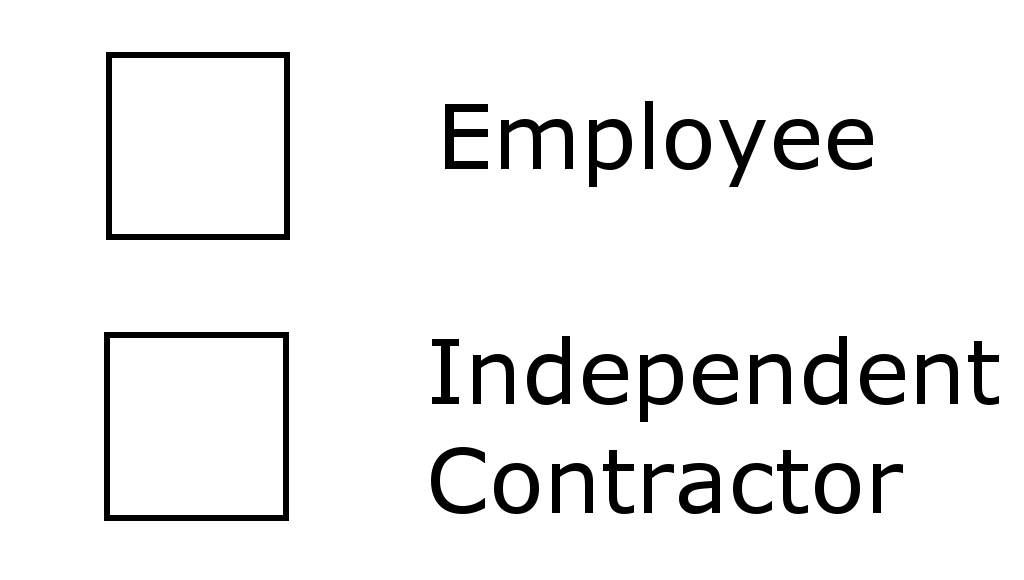
As employment legislation changes and new industries like Uber continue to emerge, the job market can sometimes feel like it’s in constant flux. One area that is especially murky, for employers and workers alike, is the difference between an employee and an independent contractor.
You may not have considered the way your employment status is classified, but it’s one of the most serious problems facing workers and the economy as a whole. Misclassified employees can be denied benefits and rights they are entitled to, like a minimum wage, overtime pay, medical coverage and unemployment benefits.
Just how serious is this problem? According to the Wage and Hour Administrator David Weil, worker misclassification is a growing concern in many established professions like construction in addition to newly emerging industries.
With the line between the two classifications being hotly debated between employers and the government, many workers are left wondering “what’s the difference between an employee and an independent contractor?”
Where, How and When the Work is Performed
The IRS has established guidelines for determining the difference between an employee and an independent contractor. Chief among these guidelines are how much control the employer has over the work being performed. Employees are required to comply with instructions about where, how, and when the work is performed. The employer retains the right to instruct and train employees on how to perform their jobs. Employees also typically work on-site and do not have the ability to set their own hours.
On the other hand, independent contractors have much looser restrictions with the companies they contract with. They typically receive no training or direct instruction, as they are expected to use their own experience and expertise to complete the job. Independent contractors also rarely have set hours, and are responsible for establishing their own timeline.
Duration, Payment and Relationship to the Employer
Employees typically devote their full time to the business and works exclusively for one employer. Their employment status is continuous, and they are typically paid by the employer for the hours they work on a set schedule. Employees are provided with the tools and equipment needed to perform their job, and are also reimbursed for additional business expenses they incur at the employer’s request, such as travel.
Independent contractors, however, are free to work for as many employers as they like. Independent contractors have a defined relationship with employers which typically end once the services they were hired for have been completed. Independent contractors are usually paid by the job in either a lump sum or project-basis, and are expected to provide their own tools and equipment.
Ending the Professional Relationship
Ending a professional relationship is never easy, but the process highlights more distinctions between employees and independent contractors. Employees usually do not realize a profit or a loss as a result of the services they provide. Employees have the right to end their professional relationship with the employer at any time for any reason, and employers may dismiss their employees under at-will employment laws.
As most independent contractors sign a binding contract at the time they are offered a particular job, ending their professional relationship prematurely is a bit more complicated. Because their payment often hinges on satisfactory completion of the assigned work, they are in a position to realize a profit or suffer a loss as a result of their services. Likewise, independent contractors usually agree to see a job through to its satisfactory completion under contractual obligation.
The Difference is Clear
Taking these factors into consideration, there is a clear distinction in the difference between an employee and an independent contractor. However many employers still misclassify their workers as a way to avoid paying employee benefits.
If you believe that you have been misclassified as an independent contractor, you have options. You can try discussing your classification with your employer, and request an explanation as to why they classified you as a contractor. You can also contact the IRS to request that they determine your employment status by filling out IRS Form SS-8.
And if you believe you may have been harmed by being misclassified as an independent contractor, contact Wexler Wallace. We have successfully litigated cases on behalf of employees to resolve allegations of sexual harassment, unpaid benefits and employee misclassification, and we are dedicated to protecting the rights and interests of our clients.
Disclaimer: This article has been prepared for general information purposes and does not constitute legal advice, nor does it imply an attorney-client relationship or contract with Wexler Wallace.
0 Comments